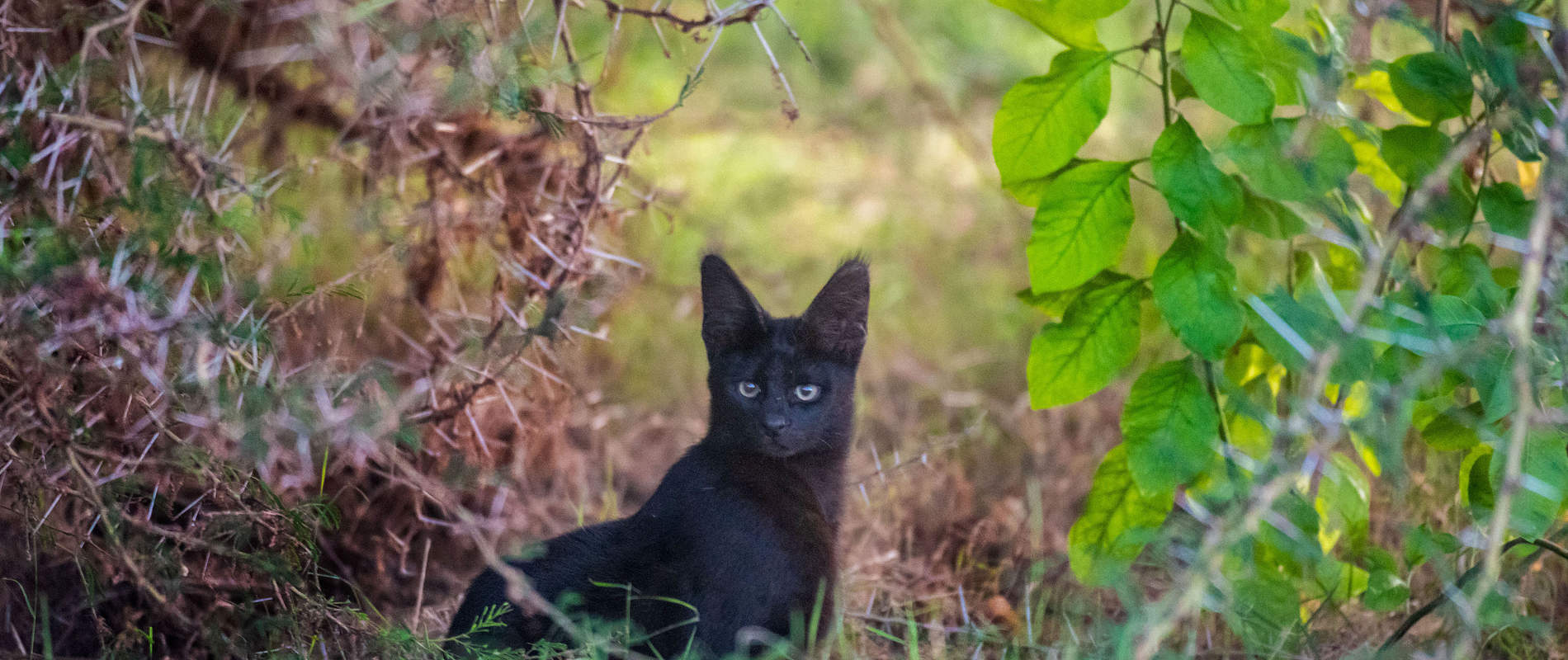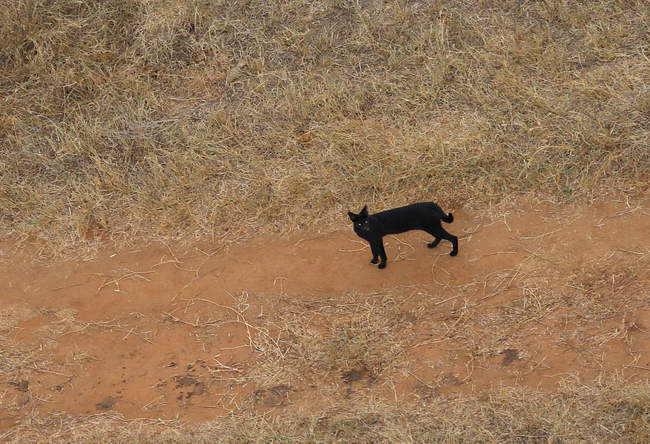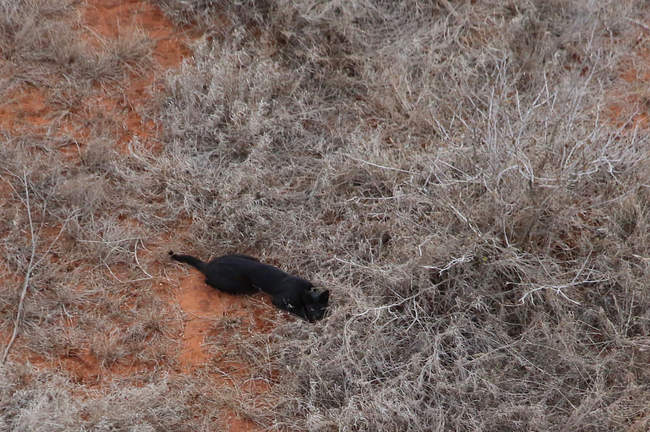Melanism in Serval (Leptailurus serval): Notes and Records from the Tsavo Ecosystem, Kenya, by Bryan Adkins and the Sheldrick Wildlife Trust
Melanism, a development of the dark-colored pigment melanin in the skin or its appendages, has been described in many species globally. In cats (Felidae) it is well-documented in leopards (Panthera pardus), and to a lesser degree Jaguars, Ocelots and other smaller cats. The reasons for the prominence of melanism in cats are not well understood. However, several theories posit that melanism is particularly relevant in high-altitude areas and forests, where cats are likely to be less exposed to open sunlight.
The Serval (Leptailurus serval) is a medium-sized cat, with relatively long limbs and large ears. It is a member of the Felidae family and has a widespread distribution across sub-Saharan Africa (Kingdon, 1989). It is specialized in hunting birds and rodents and occurs in a wide variety of habitats and ecotomes, namely grassland, bushland, wetland and forests, with the exception of high-canopy Congo basin forests.

The Sheldrick Wildlife Trust has been fortunate to hand raise a number of orphaned servals and although they are solitary animals, they form bonds with their caretakers and will return for occasional visits long after returning to the wild. They are vaguely similar in appearance to domestic cats; however, they are larger in size and more elongated, especially in the limbs. They can, in fact, reproduce with domestic cats and produce a percentage of fertile offspring.
Melanism in Servals
Servals have been identified as prone to exhibiting melanism and this has traditionally been thought to occur mainly in highland populations of East Africa, specifically in Kenya and Ethiopia at heights 2000m above sea level or greater (Sunquist & Sunquist, 2002). In the moorlands of Kenya’s Aberdares ranges, one study showed that twenty-one servals were identified, and of those, eight were completely black, with a further five showing varying degrees of melanism (Sunquist & Sunquist, 2002). These same findings have been noted by other authors in the past (Angwin, 1975) and anecdotal evidence suggests that sightings of melanistic servals in the ericaceous zones are frequent, including by the authors.
However, lowland records of melanistic servals have not been well documented until relatively recently. In the Tsavo ecosystem, which ranges across almost 26,000km2 of southeastern Kenya (KWS, 2008) and northeastern Tanzania, melanistic servals are seen on a relatively consistent basis. The altitude range of the Tsavo ecosystem is between 500m-1200m ASL, with the exception of several large massifs such as the Ngulia Range, Mt. Kasigau, the Taita Hills and the Chyulu Hills, which rise to over 2000m. In the Tsavo ecosystem, several recent and independent, research programs have begun to yield a significant number of sightings data, particularly in the southern and western areas of the ecosystem, including the Kasigau Corridor area, Tsavo West National Park, and the adjacent, Mkomazi National Park, in northeastern Tanzania. Wildlife sightings data was compiled from both the Sheldrick Wildlife Trust and Wildlife Works, organizations that have been conducting long-term data collection and monitoring in the areas.

Map 1 (above) - Serval sightings recorded in the Tsavo ecosystem. Map 2 (below) - Serval sightings recorded in Rukinga - Taita area (within Tsavo ecosystem).

From the records, we note that melanistic servals are relatively common in many areas of Tsavo, with observations from both ground-based teams and aerial sightings over the period of 2011- 2016, making up 47% of all serval sightings by the research teams. The reason or reasons for this high percentage of melanistic servals are largely unknown. One theory could be that melanistic individuals are simply more noticeable and therefore reported more frequently. This is almost certainly the case for sightings made from aircraft. However, there have been numerous flight patrols that have revealed multiple melanistic individuals across a relatively large area within the space of a few hours, demonstrating that melanistic individuals form what is suspected to be a sizable population. This line of reasoning may reveal a larger percentage of the overall population which demonstrates melanism, although the evolutionary reason for this remains poorly understood in a dryland ecosystem such as Tsavo.
In this article, we are simply recording the high number of sightings, without drawing conclusions. More research into the possible reasons for the seemingly high incidence of melanism is needed. Moreover, these records demonstrate how little we know about the structure, composition, and genetic makeup of Tsavo’s biodiversity and point to the need for ongoing research.
A special thanks to Philip J. Briggs for providing the close-up image of a melanistic serval, and to Wildlife Works for compiling the data on serval sightings in the Tsavo Ecosystem.




